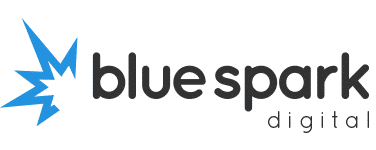How to Work With a Web Designer (Without the Headaches)
Hiring a web designer should be exciting. You’re improving your online presence, levelling up your brand, getting something that actually works.
But for some, it ends up being frustrating. Delays. Confusion. Misunderstandings. Projects that start with big energy but drag on for months.
I’ve been doing this for 30 years — and I can tell you that most of those issues can be avoided with a few simple tweaks to how you approach the project.
So here’s a no-nonsense guide to working with a web designer in a way that makes things easy, smooth, and (dare I say it?) enjoyable.
Know What You Want (Even If It’s Rough)
You don’t need a full design plan. But you do need a goal.
Ask yourself:
What’s the purpose of the site? (Leads, bookings, online shop?)
Who is it for? (Target audience, tone, vibe)
What content do I already have? (Text, images, logo)
What do I like/dislike about other websites?
Even a list of what you don’t want is helpful. We can work from that.
Be Clear About Your Budget
You don’t need to hide your budget. A good designer isn’t trying to “max it out” — they’re trying to recommend the right approach for what you can spend.
If your budget is £1,500, don’t expect a custom-built eCommerce platform with 50 product variations and custom shipping rules. But you can get a brilliant, fast, professional site that grows with you.
Be upfront and your designer can shape the project to give you maximum value.
Provide Content Early (Or Get Help Writing It)
One of the biggest project slowdowns? Waiting for content.
I’ve seen websites sit unfinished for months because the client couldn’t decide what to write on the About page.
If you don’t have content ready, talk to your designer early. They might offer copywriting help, or a structure you can fill in without going blank.
And if you’ve already written everything? Fantastic — send it early so we can design around it.
Appoint One Decision-Maker
Too many cooks = design chaos.
If there’s a team involved, agree one person who makes the final call. That way, we avoid back-and-forths like “I like blue, but John says green, and Tina wants orange…”
Clear feedback = faster project = better results.
Give Constructive Feedback
Instead of “I don’t like it”, try:
“Can we try a cleaner font?”
“I’d prefer a lighter background here.”
“This section feels a bit long — can we tighten it up?”
The more specific you are, the easier it is to make changes you’ll be happy with.
And if something looks different to what you expected — ask why. There’s often a design or usability reason that benefits your visitors.
Don’t Worry About the Tech
You don’t need to know what an SSL certificate is, or what DNS propagation means. That’s my job.
Focus on your business and your customers — I’ll handle the geeky stuff behind the scenes.
If anything ever confuses you, just ask. I explain things in plain English, and I’d rather you feel confident and informed than lost in tech jargon.
Keep Momentum Going
Web design projects can lose energy if they stall.
Set aside time each week to review progress, send feedback, or provide any missing bits. It doesn’t need to be hours — just a quick check-in keeps things moving.
I’ll always nudge you if I need something. But the quicker you reply, the faster we can launch.
What You Can Do Next
If you’re thinking about a new website or redesign, here’s how to get off to a great start:
Write a short brief (goals, audience, pages you need)
Gather your logo, brand colours, and any existing content
Check a few competitor sites — what do you like/dislike?
Decide who’ll be giving feedback and signing off
Talk to your designer about budget, timeline and next steps
Need help pulling that together? I’m happy to guide you through the process — whether you go ahead or not.
Because working with a web designer doesn’t have to be stressful. It can be smooth, creative, and surprisingly fun — with the right partnership.


